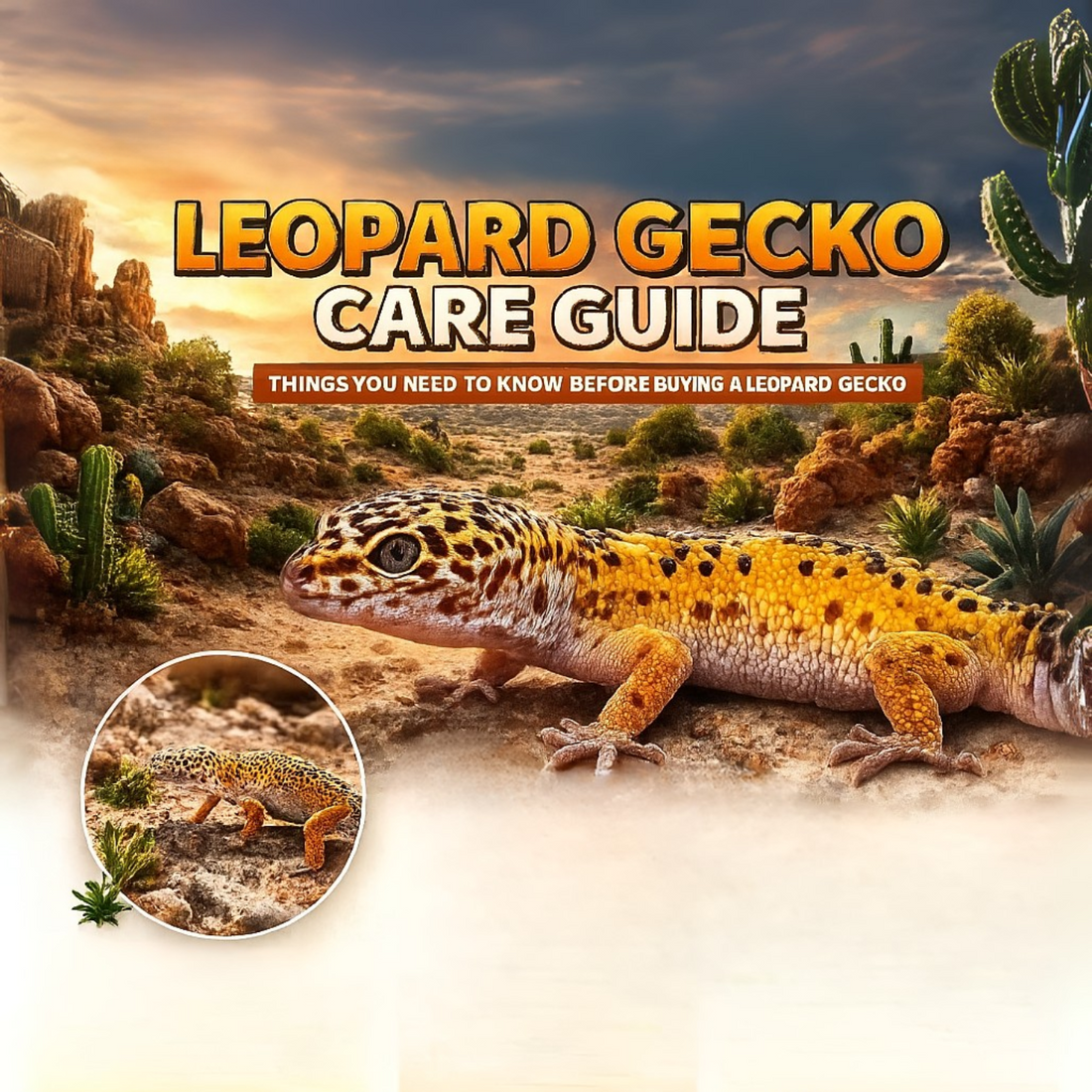
Leopard Gecko Care Guide
Share
Natural Habitat
Leopard geckos (Eublepharis macularius) are native to the rocky deserts and dry grasslands of Afghanistan, Pakistan, India, and parts of Iran. They live in hot, arid environments and hide in burrows during the day to avoid extreme heat.
Difficulty Level: BEGINNER
Leopard geckos are considered beginner-friendly reptiles. They are hardy, docile, and small, making them an excellent choice for new reptile keepers.
Size & Lifespan
- Size: 7–10 inches (females), 8–11 inches (males)
- Weight: 45–90 grams on average
- Lifespan: 10–15 years (some live 20+ with excellent care)
Enclosure Setup
Tank Size
- Juvenile: 10–20 gallons
- Adult: 20–40 gallons (a 20-gallon long is the standard minimum)
- Floor space is more important than height since they’re ground-dwelling.
Heating & Lighting
Leopard geckos are crepuscular (active at dawn/dusk), so they don’t need strong UVB like diurnal lizards, but some UVB exposure is beneficial for long-term health.
- Heat Source: Use an under-tank heater (UTH) or heat mat on one side of the enclosure. This provides belly heat for proper digestion.
- Basking surface temp: 88–92°F
- Cool side: 75–80°F
- Night temps: Can drop to 68–72°F safely
- UVB: Optional but recommended (low output 2–5% UVB tube).
Substrate
- Best options: Non-adhesive shelf liner, reptile carpet, paper towels, or a naturalistic mix (soil/sand/clay blends designed for reptiles).
- Avoid: Loose sand, calcium sand, wood shavings (impaction risk).
Humidity & Hides
- Ambient humidity: 30–40%
- Provide three hides:
- Warm hide (on hot side)
- Cool hide (on cool side)
- Humid hide (with damp moss or substrate) for shedding
Diet
Leopard geckos are insectivores. They do not eat vegetables or fruits.
Insects
- Staple feeders: crickets, dubia roaches, black soldier fly larvae
- Treats: mealworms, superworms, hornworms, silkworms, waxworms (occasionally – high fat)
- Feed appropriately sized prey (no larger than the space between the gecko’s eyes).
Supplements
- Calcium with D3: 2–3x per week
- Calcium without D3: Can be left in a small dish at all times
- Multivitamin: 1x per week
Handling & Temperament
Leopard geckos are calm, gentle reptiles that tolerate handling well. Start slow and never grab them by the tail — they can drop it if stressed. Support their body fully and let them walk from hand to hand. Over time, they often recognize their owners and may even come to the front of the tank when it’s feeding time.
